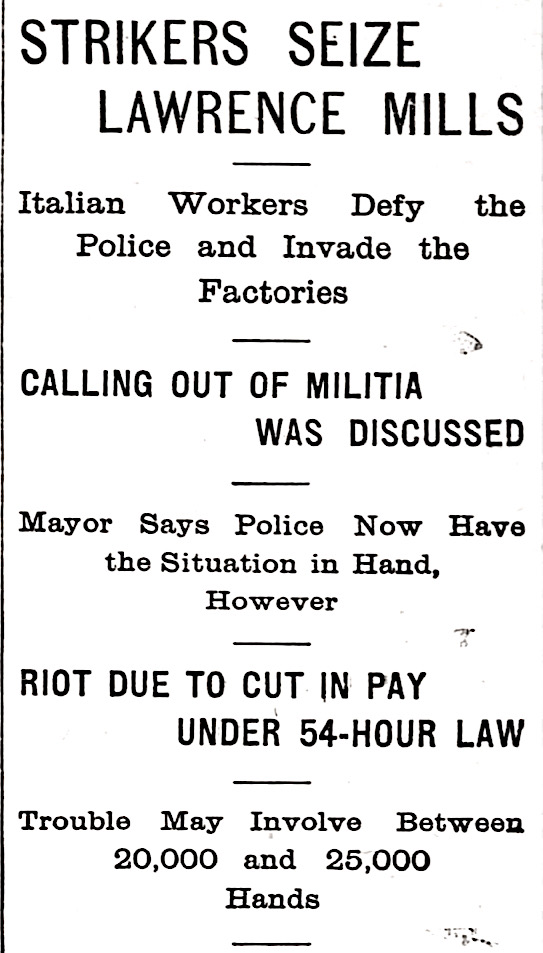 —————
—————
Hellraisers Journal – Tuesday January 23, 1912
Lawrence, Massachusetts – Joe Ettor Asserts Dynamite a “Plant”
From The Boston Sunday Globe of January 21, 1912:
By JAMES C. O’LEARY.
LAWRENCE, Jan 20-With more than 20,000 mill operatives, among whom are Italians, Poles, Syrians, Russians, Lithuanians, Franco-Belgians, Portuguese and those, of other nationalities on a strike, and talk of dynamite plots, indiscriminate bomb throwing and other acts of violence rife here for the past week, the city was thrown into a violent state of excitement today when Inspector Rooney of Boston and his men, working in squads, discovered dynamite, fulminating caps and fuss [fuses?] in three different places.
[…..]
—–
“Plant” Is Claim of Ettor.
The searchlights in the different mills are kept constantly at work, and sharpshooters posted in the towers and on the mill property are unusually alert.
Joseph J. Ettor of the Industrial Workers of the World, who is recognized by the strikers themselves and by every one else as the leader in the strike, says that the dynamite which was found was placed where it could be found by persons who later directed the searchers where to look for it.
[…..]
Seven Under Arrest.
The five men and two women who were in the tenement house when taken in the first raid at 292-294 Oak st. where seven sticks of dynamite and a box of caps were found in a closet of an unoccupied room, said their names were Farris Marad, who led the parade of Syrians on Thursday and who came into contact with the soldiers at the head of Canal st; Joseph Assaf, Trinidad Beshon, David Roshed, David Beshara, Mary Squeriq and Zekla Roshell.
A five-chambered revolver was found in the pocket of Marad, and Beshara had a pail of steel knuckles.
Marad and the two women were bailed out tonight, the former furnishing $1000 and the latter $500 each.
[…..]
Miss Flynn Begins Work.
…..Leader Joseph J. Ettor of the strikers relaxed his efforts this evening after a busy day, and went into conference with Miss Elizabeth Gurley Flynn, National organizer of the Industrial Workers of the World, who arrived on a late afternoon train.
She will begin her work tomorrow at the meeting of the Franco-Belgians and Americans in Franco-Belgian Hall in the morning and will probably address one or two more meetings in the afternoon.
—–

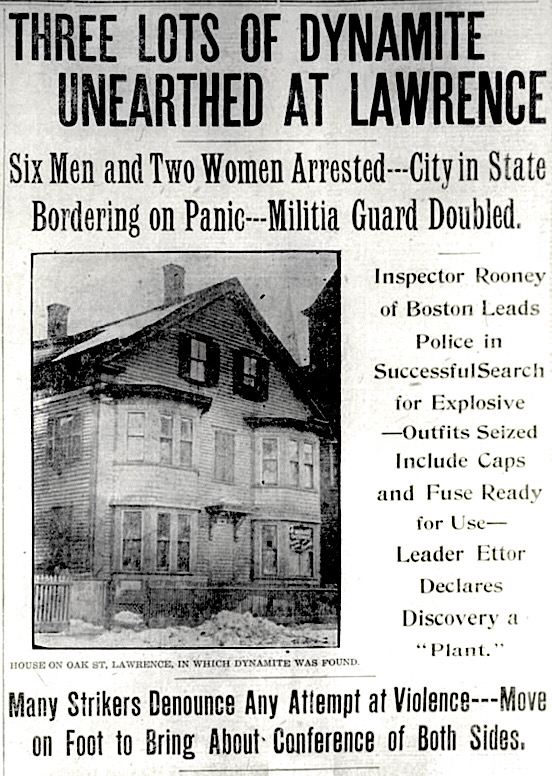
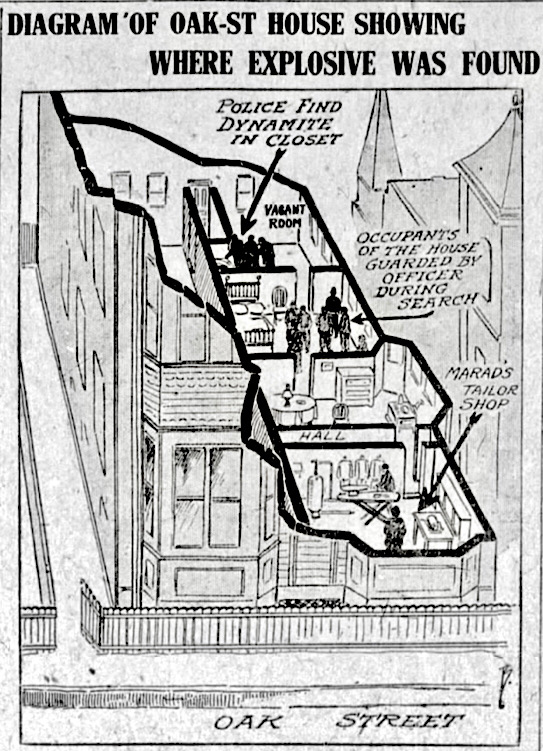
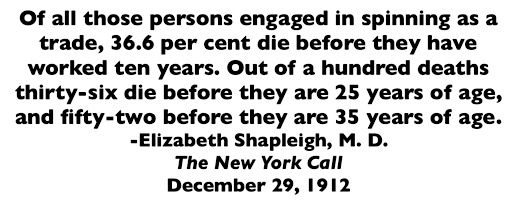 —————
—————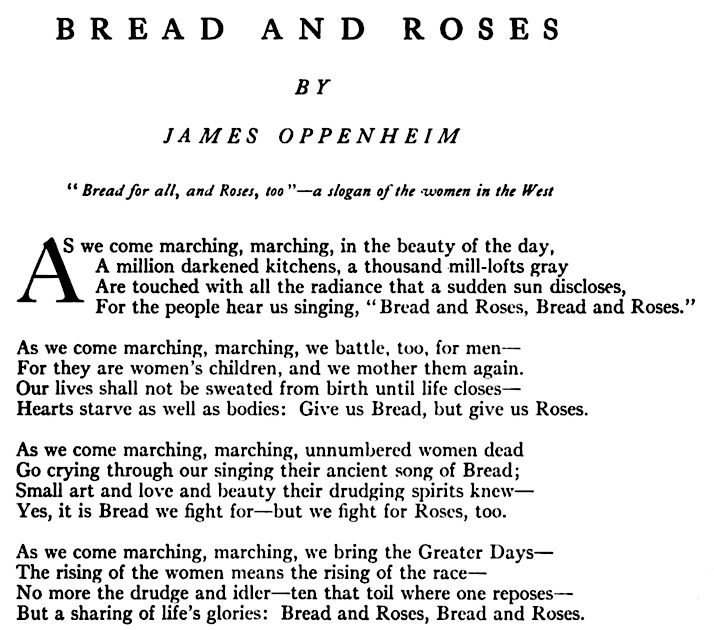
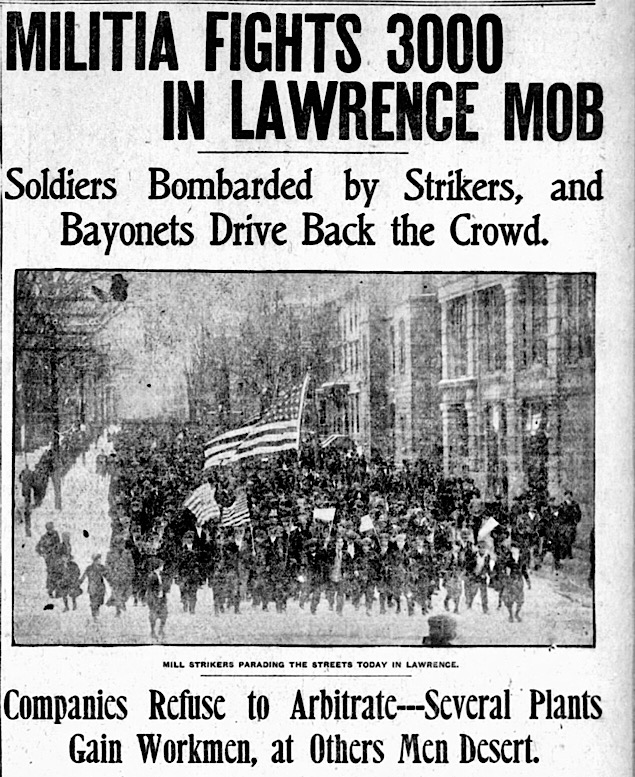
 —————
—————